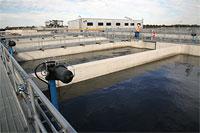The need to recycle synthetics like plastics and paper is over powered by the need to recycle water. Rain water is a recyclable and renewable resource, but was not given much attention by the world’s governments before worldwide water shortages became common. However, now with the world population growing at such an alarming rate and the problem of water scarcity on the rise, it has become very important to think about water recycling systems that we can source to help put an end to this global problem. Today, terms such as water capture and water reclamation are at the top of the priority list for many governments around the world, especially for the governing authorities of dry, arid regions.
There are water recycling systems being designed by many companies around the world and they are marketed by dedicated retailers who cater to the needs of both domestic and industrial sectors. Water recycling systems reuse water over and over again and the basic technique is that of filtering and treating the water each time. The design and installation of water recycling systems are dependent on the site, the terrain conditions, and availability of a ‘foul’ connection system. Developing water recycling systems involves adherence to government guidelines that focus on the reuse of contaminated water.
The specifics such as an impermeable vehicle wash bay, sealed sumps and a system that guarantees the sealing of the recycled water-course need to be complied with. Water recycling systems can be used for domestic or industrial use and the main focus areas for sourcing the water that is to be recycled include the wash machines and any other water which is recyclable. The design is simple with a tank mounted on a common base plate that implements hydro-cyclone solid separation technique or the electro-flocculation system. The other technique involves the use of activated carbon filtration within a fully enclosed tank. These are only a few of the several different methods of recycling water which may also include ozone infusion; a physical filter to remove solids, residual debris, oil, grease and foam; treatment with naturally occurring bacteria; treatment with UV light and the addition of chlorine. The latter processes are only possible for a corporate water supplier.

The physical Filter Phase using naturally occurring bacteria (Melbourne Water)
For domestic use, water recycling systems are easily installable and enable complete or partial reclaim of surface run off of used water. The water used to wash dishes or a vehicle is routed to a sump or within a silt trap and then treated in a three stage settlement and filtration system. The hydro-cycloning removes solids, while the electro-flocculation eliminates waxes. The final activated carbon process removes all trace of any residual organics. Thereafter the water is stored and rerouted for use on an ‘as and when’ basis. As an example, all professional car washes use water recycling systems to recycle rinse water into a system for reuse. Water recycling systems are marketed by many manufacturers who are dedicated to the effort of water conservation.
The treatment options available with different engineering units must adhere to the dos and don’ts of the anti-pollution regulations. The systems route rinse water from practically any washing operation including mining and agriculture and the amount of water that can be saved and reused this way is amazing. The water recycling systems are easily assembled by qualified tradespeople and are very durable. Because of savings made, they can be integrated into any budget quite easily. The onus to deal with the water scarcity problem is on us and it is time now that we adopt water recycling systems and accept responsibility for water conservation.
For personal service for your rainwater tank call now on 1300 88 94 90
Or Email your inquiry to info@rainwatertanksdirect.com.au



Leave A Comment